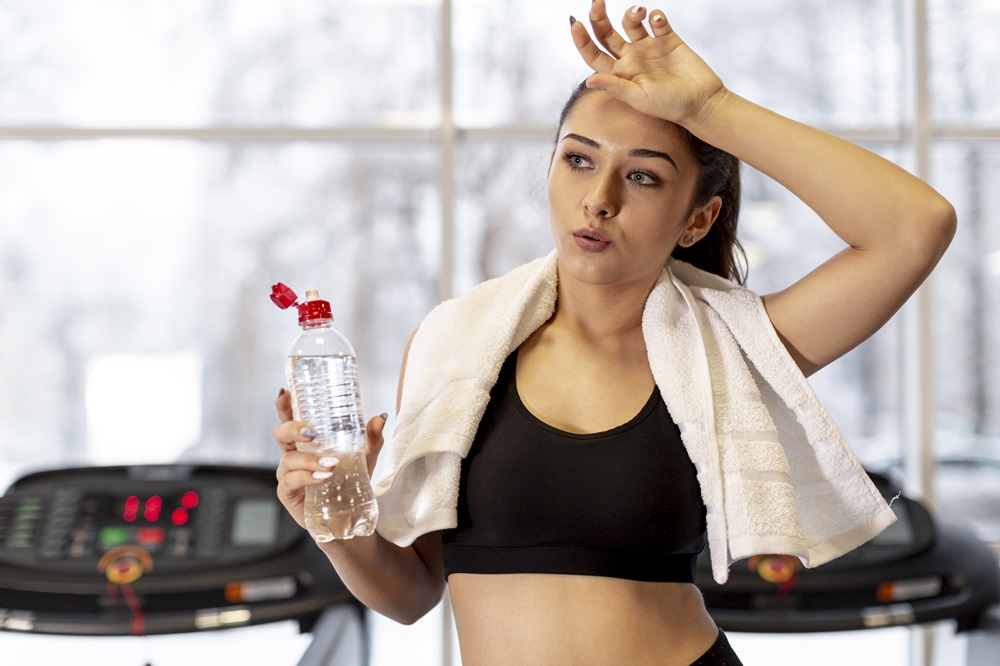Ways to Recover After Physical Activity – How to Speed Up Muscle Recovery?

Muscle recovery after exercise is a crucial part of training, yet often overlooked by both fitness enthusiasts and professional athletes. Proper recovery not only boosts performance and endurance but also reduces the risk of injuries and speeds up muscle repair. What helps with muscle recovery after workouts? How can you optimize rest? Which supplements are worth considering?
Table of contents
- What is recovery after training?
- Why is recovery important?
- How long does muscle recovery take?
- Faster recovery - how to speed up the process?
- Nutrition and recovery
- Supplements for recovery
- Sleep and recovery
- Stretching
- Therapies and recovery treatments
- Active recovery
- What’s the best way to recover?
What is recovery after training?
During intense exercise, muscles, joints, and tendons are exposed to strain and microdamage. The body also undergoes various biochemical processes, such as glycogen depletion and muscle fiber breakdown, which may trigger inflammation and increase injury risk. Recovery allows the body to repair these damages on a cellular level, playing a key role in physical performance and progress.
In simple terms, recovery restores the body’s energy reserves and prepares it for the next workout. It’s the return to full physical and mental capacity, essential for achieving training goals.
Why is recovery important?
Proper recovery helps repair microtears caused by exercise and replenish glycogen stores. It also reduces the risk of overtraining, lowers injury risk, and supports peak performance.
Additionally, good recovery reduces fatigue, improves adaptation of muscles, tendons, and joints to exercise, and minimizes catabolic processes. Beyond physical benefits, recovery also supports mental health — without it, athletes may lose motivation, experience stress, or feel burned out. Adequate rest, on the other hand, helps maintain emotional balance and long-term enthusiasm for training.
How long does muscle recovery take?
Recovery time depends on several factors, including age, fitness level, type and intensity of exercise, overall health, diet, and which muscles were worked.
Generally, recovery should be proportional to training intensity. For low- to moderate-intensity exercise, 24 hours may be enough, while after intense sessions such as interval training, 48–72 hours are often needed. Advanced athletes usually recover faster than beginners.
Faster recovery - how to speed up the process?
Recovery is complex and influenced by many factors. To accelerate it, athletes can use proven methods that help repair damaged tissue and restore energy.
Nutrition and recovery
Diet plays a key role in post-workout regeneration. Meals should include carbohydrates (both simple and complex) to replenish glycogen, high-quality protein to repair muscle fibers, vegetables for micronutrients, and healthy fats to aid vitamin absorption. Good post-workout meals include:
- oatmeal with fruit and nuts
- whole grain pasta with tuna and spinach
- whole grain bread with avocado spread
- salad with eggs, nuts, and mozzarella
- brown rice with baked chicken breast and vegetables
- protein shake with nut butter
Studies also show that certain foods can ease muscle soreness and speed recovery, such as beetroot juice, pomegranate juice, and cherry juice. Compounds like isothiocyanates, curcumin, and quercetin — found in foods like Brussels sprouts, kale, turmeric, blueberries, broccoli, and peppers — may also support recovery.
Supplements for recovery
Recreational athletes can usually get enough nutrients from food, but endurance and high-intensity athletes may benefit from supplements. Useful options include:
- carbohydrate powders to quickly restore glycogen
- protein supplements to stimulate muscle protein synthesis and support muscle growth
- essential amino acids (EAA), particularly BCAAs, to aid repair and reduce soreness
- multivitamins and mineral complexes to cover increased micronutrient needs
Sleep and recovery
Sleep is the simplest yet most effective recovery tool. During deep sleep, the body undergoes repair processes that boost athletic performance. Longer and better-quality sleep can reduce injury risk and improve training outcomes.
Stretching
Post-workout stretching helps relax muscles, reduce fascia tension, improve flexibility, and prevent tightness. Regular stretching also enhances joint mobility and supports good posture.
Therapies and recovery treatments
Hot baths, cold baths, or alternating hot and cold showers can relax muscles, improve circulation, and reduce stiffness. Massages help ease delayed-onset muscle soreness (DOMS), lower inflammation, and provide relaxation. Foam rolling (self-massage with a roller or ball) can also loosen muscles and improve blood flow.
Sauna sessions may further support relaxation, reduce stress, ease soreness, and promote detoxification.
Active recovery
Active recovery means engaging in low-intensity activities like walking, yoga, cycling, or swimming. These light exercises improve blood circulation, reduce stiffness, and help minimize DOMS.
What’s the best way to recover?
A well-rounded training plan must include recovery to ensure both health and progress. The foundation of recovery is proper nutrition, hydration, and sleep. Beyond that, methods like stretching, massage, sauna, or active recovery depend on individual preferences. Each athlete should experiment to find the recovery strategy that works best for their body.

